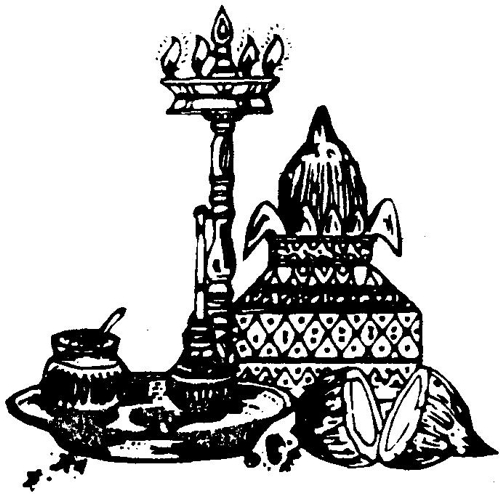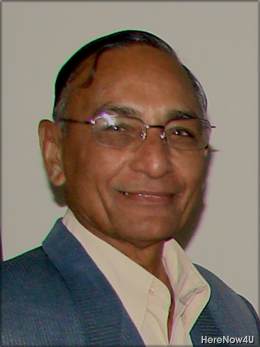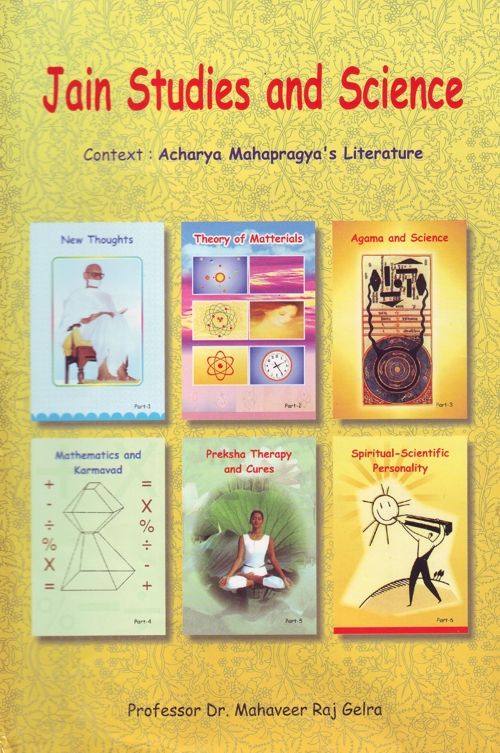Preksha - As the name suggests, it is an art of projecting our mental energies to a specific organ - just like launching a space craft where the concentrated energy is released to achieve enough momentum to break the gravitational barrier. Preksha can also be well understood by the analogy of bow and arrow, where first, the entire energy is collected and concentrated in the string of the bow, attention is pivoted on the aim and then the arrow released. In Preksha meditation Mahapragya teaches to concentrate our thoughts and mental energy in such a manner that the desired organs of our nervous systems can be addressed and necessary chemical changes can be induced with curative results. We shall analyze a few medical conditions in this context-
- Heart Ailments
- High Blood Pressure
- Asthma
- GI Diseases
- Mental Disorders and Depression
The heart is one of the most complex pressure pump ever designed. It is centre of our cardio-vascular system. It beats consistently about 70 times a minute adding to 2,400 million beats in an average lifetime. It pumps 5-30 litres of blood every minute depending upon the physical activity.
The heart is the main force behind the entire blood flow mechanism of the body. It has two main networks attached to it. The first network called as systemic circulation, consists of arteries and veins, in which the oxygen rich blood is sent to the organs and tissues by arteries and the deoxygenated blood is received back through veins. In the second network, called pulmonary circulation, the deoxygenated blood is sent to the lungs by pulmonary artery for cleansing and the release of carbon-dioxide. The oxygenated blood is returned back to heart by the lungs through pulmonary veins. These two networks form a complex junction at the heart. The exchange of pure and impure bloods is regulated in various heart chambers, which in turn are interconnected by multifunctional valves.
Because heart plays a pivotal role in the activities of cardio-vascular system, any disorder can have wide ranging effects on one's health. At times its ailments could be life threatening. In fact, coronary heart disease is the single largest killer in the developed countries. Coronary heart disease or coronary artery disease or heart attack is caused due to restrictions in heart's own blood vessels. Symptom of such a condition is often called angina in which the sharp pain is felt in the chest. Narrowing of coronary heart vessels is caused due to the slow deposition of cholesterol, calcium or plaque inside the walls of the artery. A few main reasons for such a blockage are-
- hereditary
- diabetes
- high blood pressure
- smoking and dietary habits

Medical experts have tried to prevent this avoidable condition by advising minimum intake of oily and fatty foods alongwith balanced diet and physical exercises.. They have also pioneered anti-smoking campaigns. At the same time, spiritual leaders like Mahapragya have brought forward the efficacy of yoga and meditation practices in containing the symptoms. Two major studies on heart patients have further substantiated that the experiments of Pranayam, Kayotsrg, Preksha and sound reverberations can alleviate the symptoms of angina.
- One set of experiments was conducted by Dr. S. C. Manchanda of All India Institute of Medical Sciences (AIIMS), Delhi. His expertise as heart specialist has yielded encouraging results in, firstly, preventing the onset of heart disease in vulnerable group of people and secondly, containing the seriousness in already affected patients. He found that those patients who religiously follow the yoga and meditation regime start exhibiting improvement and their symptoms of angina become milder. He concluded that while all did not respond to the spiritual healing, 30-40% patients were benefited. Their angiography results were wonderfully encouraging and out of them around 15-20% sufferers reported reduction in their blockages.
- Dr. Arvind Jain, renowned physician at M.G. Hospital, Jodhpur has published a separate study on 25 heart patients. On his instructions, these patients regularly practiced Pranayam, Kayotsrg and Preksha for six consequetive months. Out of these 10 individuals reported positive results. Their blood cholesterol reduced to normai, chest pain subsided and echo cardiograph showed enhanced heart efficiency. His findings can be tabulated as follows-
Number of Patients | Average Anginal Pain Per Day | Average Maximum ST Depression in ECG | |||||
Age | Males | Females | Total | Before | After | Before | After |
31-45 | 03 | - | 03 | 0.8±0.6 | 0.6±0.4 | 2.1 Segments | 1.4 Segments |
46-60 | 11 | 04 | 15 | Time Elapsed during T.M.T. before pain starts
| |||
61 + | 04 | 03 | 07 | ||||
Grand Total | 18 | 07 | 25 | ||||
Analyzing above table Dr. Jain observed that Preksha meditation acts in two ways - one, by reducing Lipoprotein in the blood and another, by inhibiting Platelets to cumulate.
A particularly helpful mean of Preksha is suggested by Mahapragya. He asks the people to echo a particular sound of 'Lnnn..'. According to him, this reverberating sound excites the Parasympathetic System which, in turn, relaxes the coronary artery and resultantly increases the blood flow. Results obtained during Preksha meditation on the patients of valve dysfunction, Myocardium and Pericardium are also encouraging. If these observations can be verified on medical grounds, it will be a great help to the mankind.
2. High-Blood Pressure (Hypertension)
It is another disease which is quite wide spread. Around 20% population is affected by it. Fast and modern life-style, coupled with tension, competition and irregular dietary habits take its toll on the people who start suffering essential hypertension. Besides, abnormal adrenal and thyroid secretions too, result in hypertension. The symptoms of this disease like, headache, giddiness etc. are often confused with those of general tiredness and people tend to ignore them. But, sustained high blood pressure may result in serious repercussions -paralysis, heart attack, kidney failure, brain or eye hemorrhage etc. It is, therefore, essential that it be taken seriously and the people after 40 years of age should get their BP checked at regular intervals. Also, the policy of 'prevention is better than cure' aptly applies in this case.
2.1. Effects of Pranayam
Mild hypertension can be fully cured by inculcating suitable changes in the life style. One such change is to develop the habit of practicing Pranayam on daily basis. Relaxing the body, results in reduced pressure on adrenal and rennin system. It is even medically accepted that relaxation techniques can alleviate hypertension. In 2003, for the first time, a medical committee acknowledged the importance of refined life style and meditation in containing the high blood pressure. They recommended that in case of mild forms of disease, meditation should be encouraged even before prescribing medicines. Though the committee did not enlist the meditation techniques, Pranayam and Preksha meditation have wide spread presence. Another study by Dr. Jain at Jodhpur has vindicated that Preksha can not only eliminate the high blood pressure in case of patients with mild symptoms but can substantially reduce the repercussions in case of serious patients. In his experiment on 25 patients, he found that 14 patients were benefited, out of which, 4 patients dispended with the medication.
Number of Patients | Average Blood Pressure in mmHg | Average Blood Pressure in mmHg | |||||
Age | Males | Females | Total | Before Preksha | After Preksha | ||
Systolic | Diastolic | Systolic | Diastolic | ||||
31-40 | 04 | 03 | 07 | 150±17 | 98±9 | 130±11 | 90±4 |
41-50 | 06 | 04 | 10 | ||||
51+ | 04 | 04 | 08 | ||||
Grand Total | 14 | 11 | 25 | ||||
Similar experiments carried out at AIIMS, Delhi yielded similar results. They concluded that within 2-4 weeks of adopting the Pranayam, results are favourably manifested. They further stressed the need of regular meditation to keep the hypertension at bay. Those who have hypertension due to abnormal adrenal and thyroid too, can be benefited by meditating upon Tejas Centre or Vishudhhi Centre.
3. Bronchial Asthma
It is a complex disease with a distinct feature of breathlessness. In an asthmatic attack, the walls of the bronchi constrict and block the air passage resulting in wheezing and breathlessness. While emotional and physiological stress may trigger the asthma, it is mainly caused by allergic reaction to certain chemicals and pollens which are otherwise harmless to the others. It is observed that those prone to asthma produce lucotrines during asthmatic attack. These lucotrines are also produced in instances of stress and often trigger the asthma attack. Mahapragya feels that Pranayam and Shwash-Preksha are very effective in containing the leucotrine production resulting in reduced recurrence of asthma.
3.1. Shwash-Preksha
At Jodhpur Holistic Centre, 50 patients with tendency of asthma underwent the experiment of Shwash-Preksha. Two fold positive effects were observed - reduced frequency of attack and diminished intensities during each attack. Almost 60% of the patients started feeling healthy and energetic. Their spirometry improved and the intake of steroid inhalers too was subsided. These results are tabulated -
Number of Patients | Per Day Inhalations of steroids or Bronchodilator | Spirometry FEV, | Reduction in Asthma Attacks% perday | ||||
Age Group | Males | Females | Before Preksha | After Preksha | Before Preksh | After Preksha | |
16-30 | 25 | 10 | 4 Times | 2 Times | 60% | 60% | 50 |
31-45 | 5 | 10 | 6 Times | 4 Times | 50% | 60% | 33 |
Medically, it is presumed that the mental calmness and excitation of respiration system result in minimizing the production of leucotrines. Mahapragya believes that these exercises of Shwash-Preksha can be beneficial to the patients of other respiratory problems like chronic bronchitis and Emphysema. However, extensive scientific observations are necessary before a claim is made.
4. Disorders of Digestive System
Eating is an important, essential and pleasurable activity of life. Food provides essential energy and nutrients to the body thus maintaining proper growth and development. Like a vehicle, body too, needs proper fuel in the form of food. As it is absolutely essential to use a pure fuel suitable for the designed engine of a vehicle, it is equally important for the body as well. But, unfortunately, intake of junk food, alcohol and smoking along with fast-food varieties are giving rise to various disorders, like gas, indigestion, ulcer and hyperacidity. Like a vehicle confined to garage becomes unusable, our sedentary life-style with minimum physical activity and lack of exercise regime have further deteriorated the digestive health. Ulcer and other diseases, if left untreated for long durations, may even lead to dreaded cancer.
Basic tenets of Jainism - Satvik or balanced diet and to shun food intake after sun-set are meant to maintain a healthy digestive tract. It is observed that the food is digested within three hours if body stays awake. On the other hand, sleep soon after dinner results in partial digestion and causes long term disorders. Some such disorders are - irritable bowel syndrome, ulcers, gastritis, heartburn and flatulence. All these diseases are mostly caused by the type, quantity and frequency of food we eat. A strong discipline in all the three factors - type, quantity and frequency, is essential for healthy body and thus, healthy mind.
The correct type is - a balanced diet. Breath and food are two fundamental requisites of a body. These activities start right at birth and continue till death. A right approach to both needs to be cultivated. Mahapragya, therefore sermonizes Aahar-Vivek. The entire wisdom of good food can be summarized in just two lines -
- Relinquishing non-vegetarian foods, fast-foods, spicy and oily foods.
- Adopting vegetarian diet with optimum quantities of salt and sugar.
The correct quantity is - the moment our mind senses satiety. Our body has a very intelligent feedback mechanism. Whenever we eat or drink, certain chemicals send a message to the mind that enough has been consumed. We all have experienced it very distinctly when we drink water, after certain quantity is consumed, mind receives a signal that the thirst has quenched. Similar is the case with food, where a signal of satiety is transmitted. We must stop eating there. But, when the tongue-teasing food is available, the greed takes over the senses and we tend to overeat. Remember, all decisions based on either fear or greed, tend to fail in the long run!
The correct frequency is - four meals a day - three light meals and one sumptuous. Intake of even a single grain triggers the entire sequence of digestion - from secretion of saliva in mouth to the various acids and enzymes down the lane. In absence of enough food, these digestive juices act on walls of stomach and intestines causing ulcers, acidity and other disorders. Various trials on different age-groups have proved that a full afternoon meal, accompanied by light breakfast, evening snacks and low calorie dinner is usually ideal.
The final step in the entire digestive cycle is the expulsion of waste and roughage. Consider a vehicle with blocked exhaust. The vehicle's engine will start behaving strangely. Though the problem is in exhaust, it would look as if engine has gone down and vehicle does not start. Cleanse the exhaust mechanism and vehicle comes on. Similar is the case with the body. Excretion of faeces is equally important. After the food is broken down into simpler chemical compounds in the stomach, it travels to small intestine, where enzymes from pancreas break it down further. As the liquidized food descends, nutrients are absorbed and the undigested food and waste faeces enter the large intestine. Here, the further processing of nutrients is taken care of by the liver, absorption of water takes place and the semi-solid remains are collected in the rectum and ejected by anus. This simple looking process of waste excretion is controlled by the complex nervous mechanism using various muscles of the body. When the rectum fills, brain feels the desire of passing stool. After examining the suitable circumstances, brain sends a signal to the nervous centre in the spinal cqrd and, which in turn activates the abdominal and sphincter muscles to complete the task of discharging the waste from the body. Here, 'after examining the suitable circumstances' is of utmost importance. Brain needs to be calm. If brain is agitated or disturbed by the environmental compulsions, constipation may result, which more often becomes chronic if not taken care of. Bhavkriya and Kayotsarg help stabilize the emotions and save from wide ranging disorders of digestive tract.
4.1. Preksha and Improvement in Digestion
Mahapragya has found that Preksha meditation helps prevent digestive disorders as well as cures them in preliminary stages. Direct result of Preksha relaxation technique reduces tension and thus results in the reduced acidic secretions from stomach. This also has calming effect on parasympathetic nervous system which reduces the secretion of gastrin. These effects of Preksha diminish the chances of any digestive disorders. Preksha Asana also includes the exercises of diaphragm. Voluntary movements of diaphragm control the Vegus Nerve. Preksha also teaches one to control emotions and to observe silence while eating with concentration. This also prevents any possible mishap of getting food entered in to the wind pipe. It is an interesting medical fact that both wind and food pipes share a common lid called epiglottis which closes off the larynx and trachea when the food or drink is swallowed. Talking and other unwarranted movements during eating may cause food to enter the wind pipe which, in worst case, may choke a person to death. Preksha, therefore, teaches us to be conscious of entire eating process and to disregard the surroundings.
5. Depression
An ailment rising from the fast and materialistic life style is - depression. Most people experience low spirits at some time in their lives. Symptoms of depression have a very wide spectrum. Though the basic feeling of low spirit is common in all kinds of depression, neurosis and psychosis result in experiences like, sadness, worthlessness, delusions, hallucinations etc. In extreme cases of mania, persons become aggressive and irritable. At times, severely depressed people develop suicidal tendencies as well.
Reasons of neurotic depression could either be a bereavement or failure. Psychotic depression may result from physical reasons like malfunctioning of endogenous system including some parts of brain such as hypothalamus. Whatever the reason, depression is mostly treated by those medicines which increase the dopamine and stops serotonin uptake. Dopamine stimulates the brain cells, initiates the exchange of sodium and potassium ions resulting in electrical impulses. In extreme cases where antidepressant drugs fail, doctors resort to Electro Convulsive Therapy (ECT) to cause a temporary epilepticlike fit. Brain undergoes a momentary seizure and chances of restoration of normal functioning increases.
Keeping mentally fit is a skill which everybody can and should master. It is a two-pronged strategy - 5.1. Relieving tension by- Muscle Relaxation
- Deep Breathing
- Meditation
- Exercise
5.2. Increasing mental resilience by
- Acting and thinking positively
- Keeping busy
- Living in present
- Discussing problems over
- Avoid taking problems to bed
- Observing fast - overcomes laziness and enhances self control
Spiritual tools like meditation, yoga etc. have found universal acceptance even in the medical fraternity. These exercises keep both - mental and physical -health in good condition. They are based on the axiom that 'the prevention is always better than cure.' Time-tested spiritual practices are like a 'stitch in time saves nine.' On the other hand, advancements in medical, computer, electronics and space sciences have given rise to very interesting and peculiar possibility -'an eternal soul need not leave a Nashwar Shareer, rather it can find a permanent abode in an immortal body.' The possibility is not very far off.

 Dr. Mahavir Raj Gelra
Dr. Mahavir Raj Gelra

